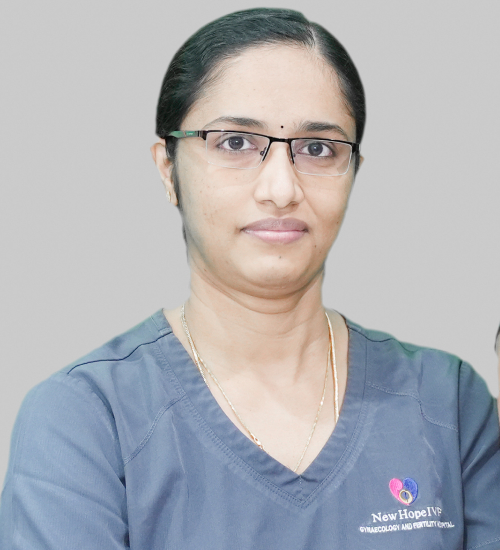FEMALE INFERTILITY
Infertility is often a multifactorial problem and in any given couple may be related to the female partner, the male partner or the combination of both. Here we look at the lab tests, examinations and procedures, which help in diagnosing and predicting the fertility of the couple.
A basic infertility evaluation begins with a thorough medical history of the couple and a physical examination is routinely done.
The workup varies and depends upon the medical history and the ages of the patients involved. Only the essential and relevant tests are prescribed with an emphasis on cost effectiveness of the investigation.
FACTORS IN FEMALE INFERTILITY
1. ADVANCED AGE
It is believed that human females are born with around 1-2 million eggs (oocytes). Female fertility begins to decline in the late twenties, however conception rate remain high into the30’s. Fertility continues to decrease rapidly after the age 37 because of the reduction in the number and quality of eggs in the ovaries. Changes in the hormone levels due to the decrease in the number of eggs lead to a reduction in a woman’s fertility.
Fertility may decrease also due to other causes such as ovarian surgery, severe endometriosis, smoking, pelvic infection, chemotherapy and radiation therapy. All these are causes that lead to a premature reduction in the number of eggs in the ovaries and would subsequently lead to a reduction in fertility.
Women over 35 years of age have increased risk with miscarriage as well. The quality of eggs at the age of 35 declines, so the chances of having an embryo with abnormal chromosomes increase, thus leading to developmental problems that could lead to the loss of the pregnancy. Although most women will be able to conceive naturally and give birth to a healthy baby if they get pregnant at 35 years of age yet because of the decrease in fertility women older than 35 years who have not been able to get pregnant after 6 months of unprotected sex should consult with a health care professional.
The proportion of women, who experience infertility, miscarriage , or problems with their babies at the age of 35 increases.
After the age of 40 statistics show that only two in five of those who wish to have a baby will be able to conceive.
2. PCOD
Polycystic ovarian syndrome (PCOS), also known as, PCOD (polycystic ovarian disease) or Stein-Leventhal syndrome.
Women suffering from polycystic ovarian disease (PCOS) have enlarged ovaries with multiple small cysts. The ovary produces excessive amounts of androgen and estrogenic hormones.
The typical history is that of irregular menstrual cycles, which are unpredictable and can be very heavy. Women with PCOS are often overweight and may have hirsutism, (excessive facial and body hair) as a result of the high androgen levels. Not all women with PCOS have all or any of these symptoms.
Vaginal ultrasound, shows that both the ovaries are enlarged with multiple small follicles, usually arranged in the form of a necklace along the periphery of the ovary. Typically, blood tests show a high dehydroepiandrosterone sulphate (DHEA-S) level; a high LH level and normal FSH level and a high AMH level. Many women with PCOS also have elevated insulin levels because of insulin resistance.
3. ENDOMETRIOSIS
This is the presence of endometrial tissue outside (ectopic) the uterine cavity. This ectopic endometrial tissue responds to the hormonal changes in the body just like the normal endometrial tissue present within the uterine cavity.
The normal endometrial tissue present in the uterine cavity gets discharged from the body during periods. But this ectopic endometrial tissue has no outlet and it remains to irritate the surrounding tissue.
Between 20-40% of infertile women have endometriosis.
Surgery may be needed to improve fertility by removing adhesions, lesions, nodules or endometriomas.
Women with endometriosis are always advised to avoid delay in planning their family. If spontaneous conception does not occur, IUI or IVF is advisable depending on the duration of infertility and other associated factors.
4. UTERINE ADHESIONS
Intrauterine adhesions are also known as Synechiae or as Ashermans syndrome
Intrauterine adhesions can occur due to the following:
- Elective medical termination of pregnancy
- Postpartum curettage
- Curettage for missed abortion
- Curettage for vesicular mole
- Curettage after caesarean section
- Abdominal/Hysteroscopic myomectomy
- Other uterine surgeries
- Genital tuberculosis
Presenting symptoms:
- Menstrual disorders
- Infertility
- Recurrent pregnancy loss
Hysteroscopy is useful for the confirmation of diagnosis as well as for treatment.
Normal cyclical menses can be restored in 70% – 90% of women with intrauterine adhesions. Reported conception and term delivery rates after successful treatment have ranged between 25% and 70%.
5. FIBROID UTERUS
Fibroids are also known as myomas or leiomyomas. Fibroids are smooth muscle tumors of the uterus. They are the most common tumors of the uterus and the female pelvis. These are benign. The prevalence of fibroids increases with age in the reproductive years and is about 40% after the age of 40 years. Fibroids are of 3 types, according to their location:
- Submucous- a fibroid which grows beneath the uterine lining
- Intramural- a fibroid which grows mainly within the wall of the uterus
- Subserous- a fibroid which grows toward and beneath the outer surface of the uterus
The symptoms depend on the size, site and number of fibroids. Most fibroids are small and do not cause any symptoms
- Menstrual disturbances
- Pelvic pain
- Abdominal lump
- Subfertility/Infertility
- Pregnancy related problems
Fibroids account for 2-3% of infertility cases. Myomectomy’ the procedure for removing fibroids can be done through an open surgery or laparoscopically. This may not be beneficial in infertile women unless the fibroids are very large.
6. BLOCKED TUBES
Tubal pathology is among the most common causes and is the primary diagnosis in 20-25% of infertile couples.
The causes of blocked tubes could be the following
- Pelvic inflammatory disease
- Tuberculosis
- Endometriosis
- Tubal ligation
Evaluation of tubal patency
- Hysterosalpingography
- Laparohysteroscopy
- Sonohysterosalpingography
The management depends on the site and the extent of the tubal block. Accordingly, tubal reconstructive surgery or IVF should be considered.
Meet Our Doctors
Our team

Dr. Mohamed Osama Taha

Dr. Gomathy Nachimuthu

DR. IBTESAM SHEYA A. SHANEEN AL JABAWY


